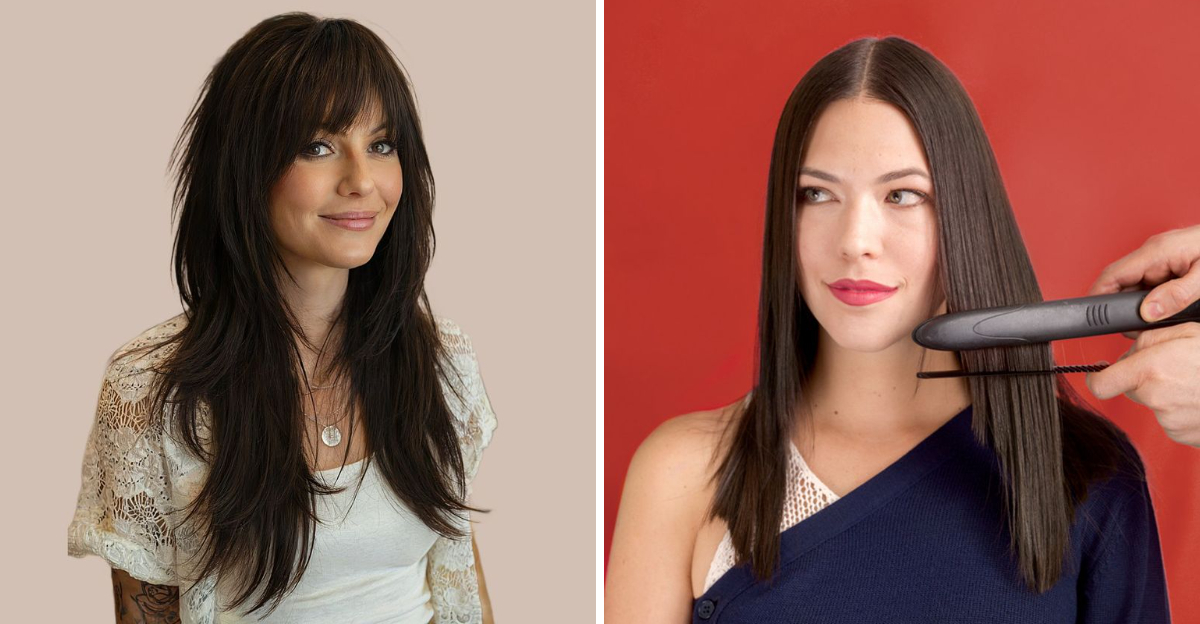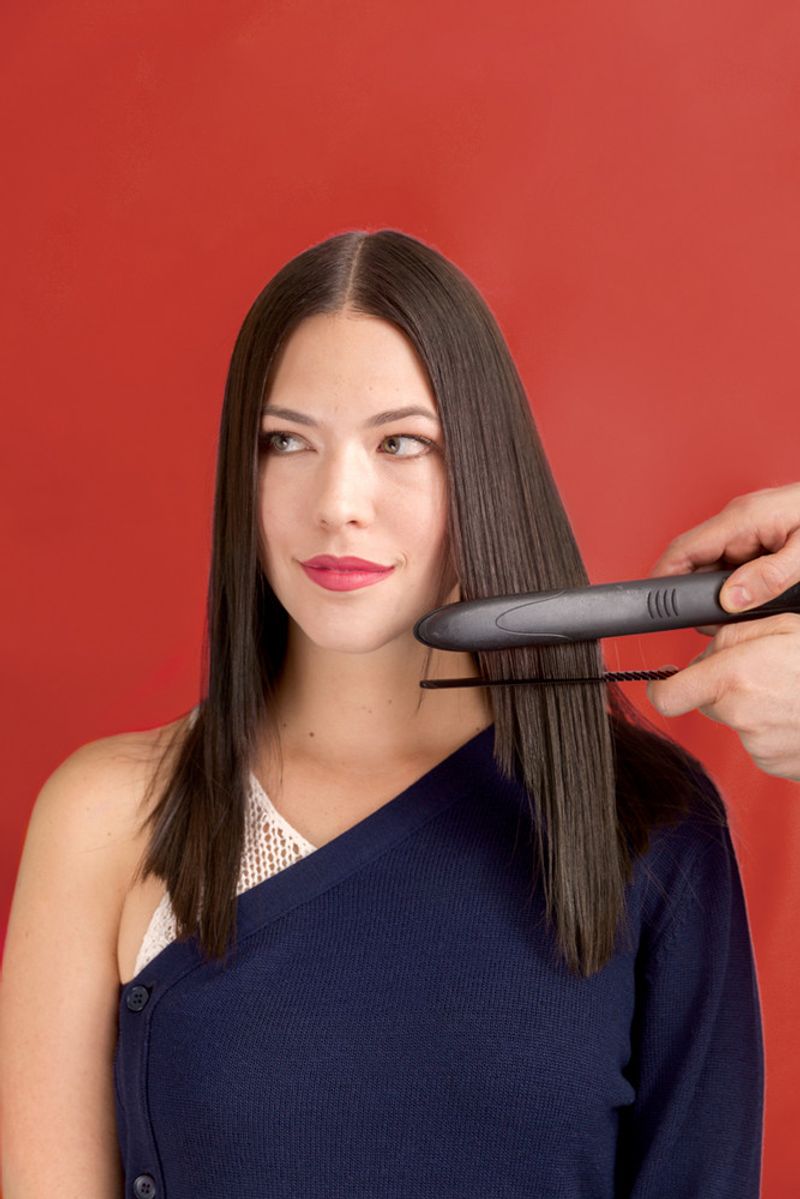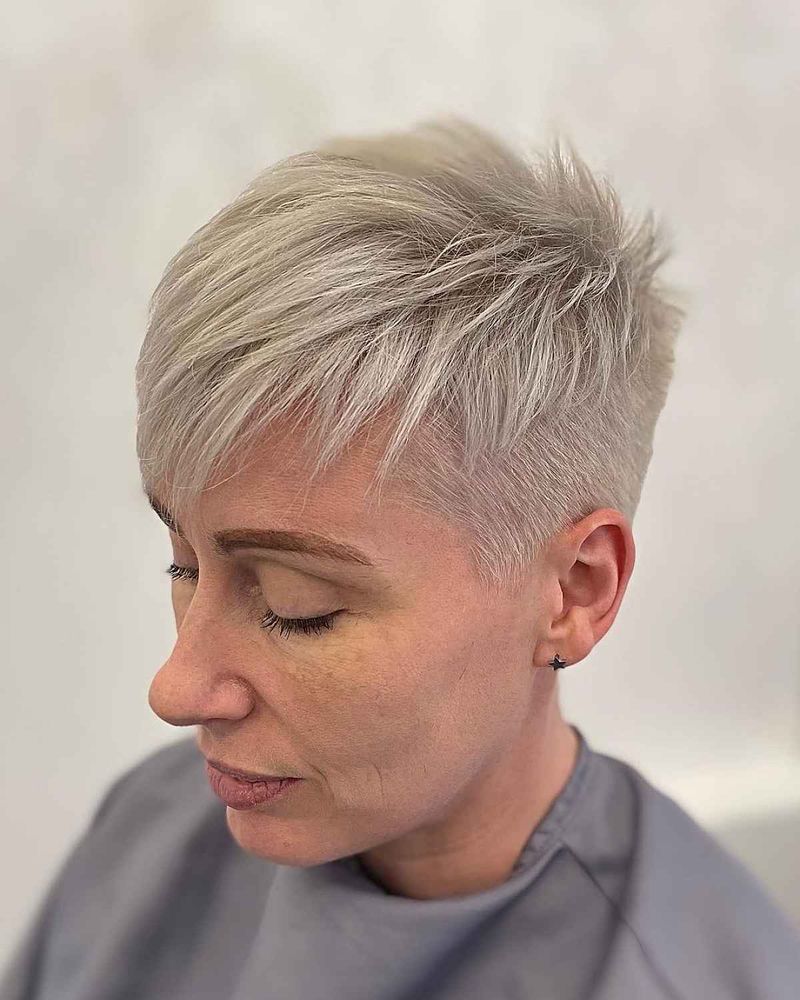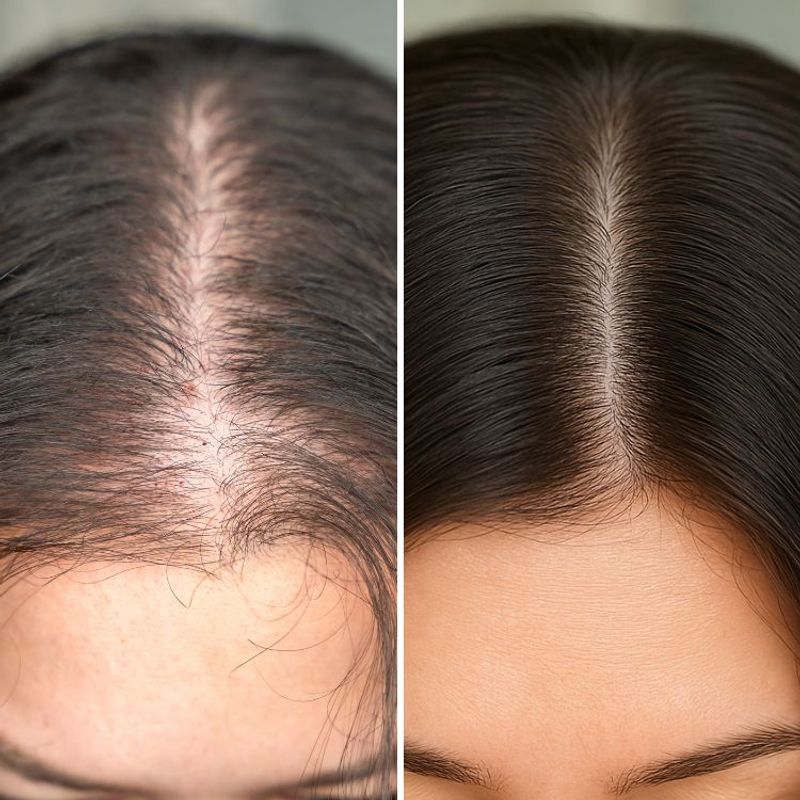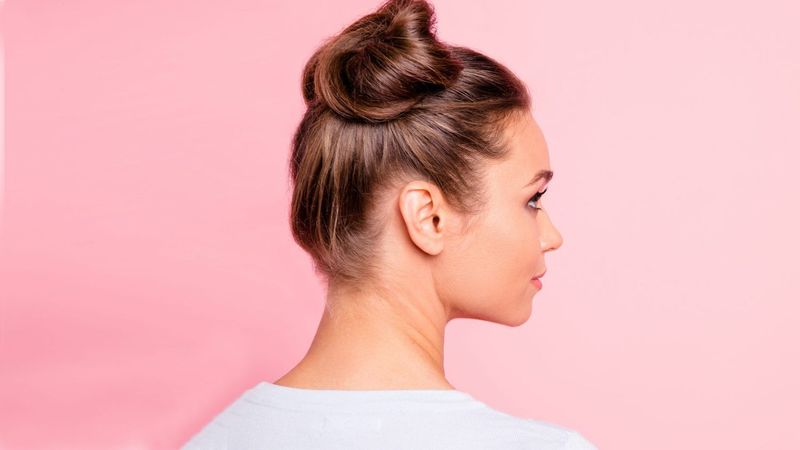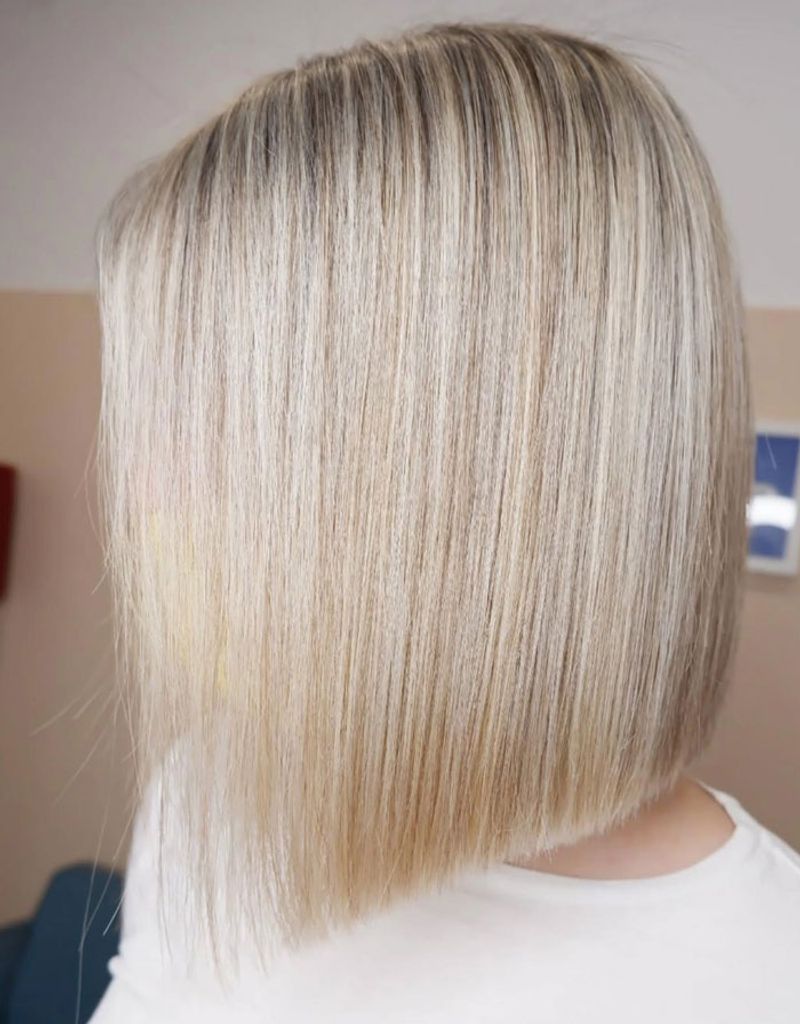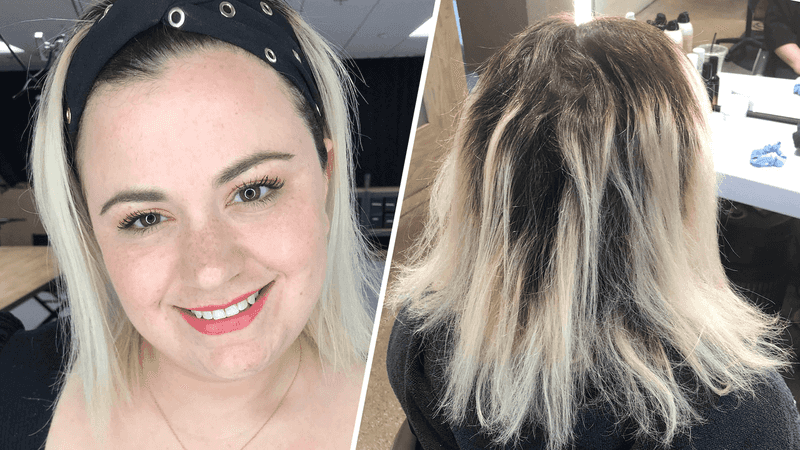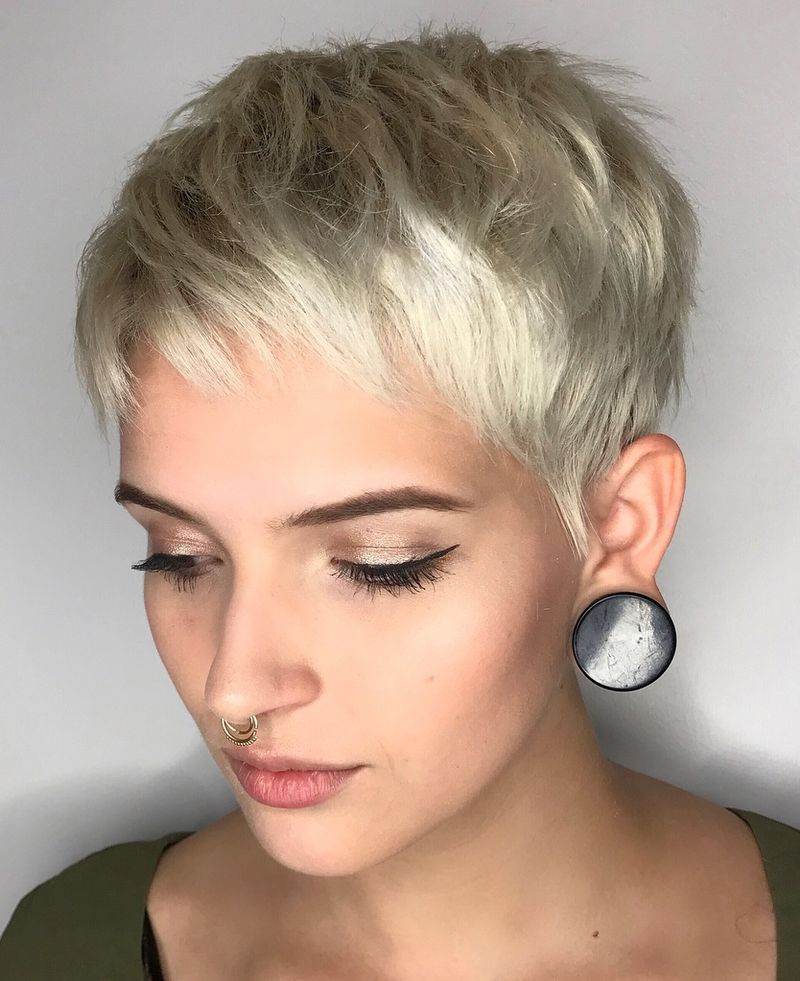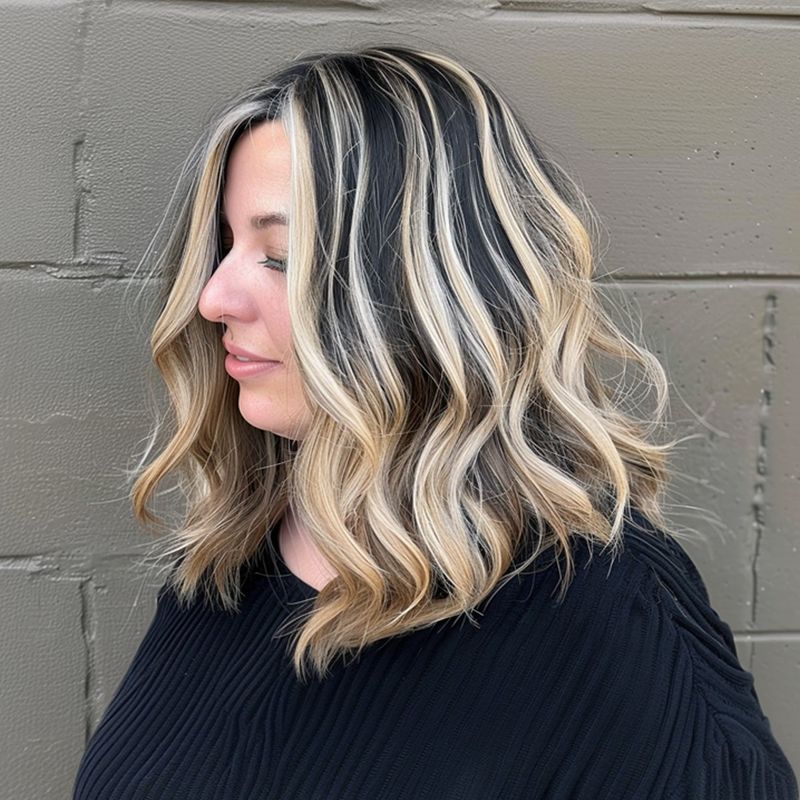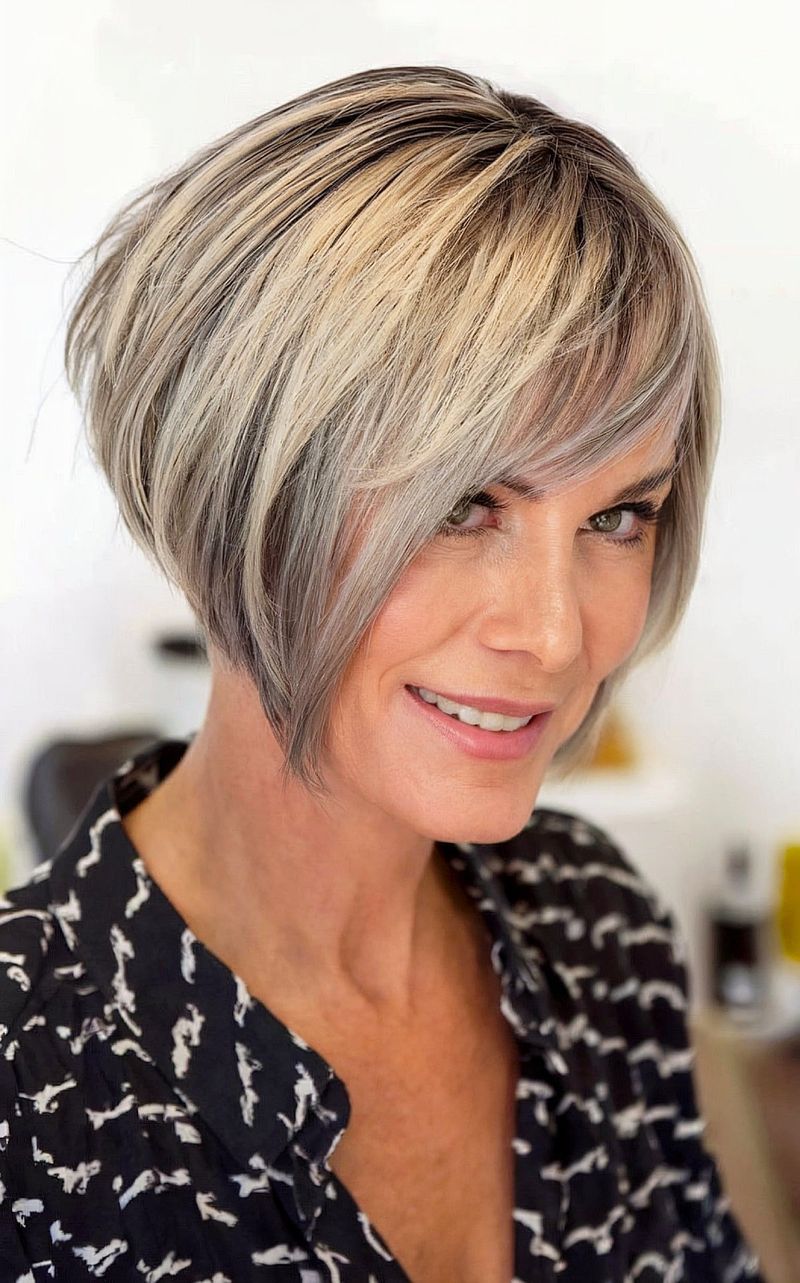Fine hair requires special care and attention when choosing a hairstyle. The wrong cut can make already delicate strands appear even thinner and lifeless.
Many women with fine hair struggle to find styles that add volume and dimension rather than weighing down their locks. Let’s explore hairstyles that fine-haired women should steer clear of to keep their tresses looking their best.
1. Super Long, One-Length Cuts
Gravity pulls down long, fine hair, making it appear flat at the roots. Without layers or texture, these lengthy locks hang limp against your head.
Related: -Thinking About Box Braids? Here Are 17 Things You Should Know
The weight of extended tresses stretches delicate strands, reducing natural volume you might otherwise enjoy with a shorter cut.
2. Blunt, Heavy Bangs
Solid-edge bangs require substantial hair to create, often depleting volume from the rest of your style. The heaviness draws attention to thinness elsewhere.
Fine-haired folks typically lack the density needed for thick fringe, resulting in sparse, separated strands rather than the desired full effect.
3. Sleek, Stick-Straight Styles
Ironing fine hair completely flat eliminates what little natural texture and volume you have. The result? Hair that looks practically painted onto your scalp.
Ultra-sleek styles highlight every thin patch and scalp visibility issue, problems fine-haired women typically try to minimize, not emphasize.
4. Single-Process Dark Colors
Solid dark shades create harsh contrast against pale scalps, making thin areas more noticeable. Your hair’s natural dimension disappears under uniform color.
Dark hues also highlight the difference between hair thickness at roots versus ends, drawing unwanted attention to thinning spots along the part line.
5. Slicked-Back Wet Looks
Gel-heavy styles plaster fine strands to the head, creating a severely flat appearance. The wet effect makes individual hairs clump together, revealing more scalp than usual.
Without substantial thickness to support this dramatic look, fine-haired women end up with a sparse, patchy finish rather than sleek sophistication.
6. Overly Layered Shags
Excessive layers can remove crucial bulk from fine hair, leaving ends wispy and insubstantial. What works for thick-haired folks often backfires on delicate strands.
Too many layers create disconnection between sections, making hair appear stringy rather than voluminous. The intended texture becomes more scarecrow than rock star.
7. Half-Shaved Undercuts
Removing substantial hair with undercuts significantly reduces overall volume for those already lacking density. The contrast between shaved and longer sections emphasizes thinness.
Growing out these dramatic cuts becomes particularly problematic, with awkward stages highlighting fine hair’s inability to provide adequate coverage during the transition.
8. Severe Center Parts
Middle parts create symmetrical separation that exposes the scalp along your part line. For fine-haired women, this draws unwanted attention to areas where hair density is lowest.
The harsh division lacks the softness that helps create an illusion of fullness, instead creating a stark line highlighting any thinning at the crown.
9. Tight Ponytails and Buns
Pulling fine hair into sleek updos reveals how little volume you’re working with. These styles create tension that flattens roots and highlights thin patches.
The resulting ponytail or bun often appears disappointingly small and sparse, lacking the substantial, luxurious look these styles are meant to achieve.
10. Blunt Bob Without Texture
One-length bobs without internal layers or texturizing can hang limp around the face. The clean lines emphasize any unevenness in density throughout fine hair.
Movement and dimension are sacrificed for precision cutting, resulting in a flat curtain effect rather than the chic, sophisticated look you’re aiming for.
11. Over-Processed Platinum Blonde
Harsh bleaching processes damage hair’s protein structure, making already-fine strands even more fragile and prone to breakage. The resulting texture often becomes cotton candy-like.
Extremely light colors also increase transparency, making fine hair appear even thinner as light passes through each strand rather than reflecting off it.
12. Choppy, Piecey Pixies
Super-short, heavily texturized cuts can leave fine hair looking spiky and sparse rather than artfully tousled. The disconnected pieces reveal scalp between sections.
Without adequate density to support all that texture, these edgy styles often fall flat or stick out awkwardly instead of creating the desired effortless cool vibe.
13. Heavy, Chunky Highlights
Thick streaks of contrasting color create harsh lines that chop up visual flow, making fine hair appear disconnected rather than full. The stark divisions draw attention to thinness.
Bold highlight placement often fails to create the dimensional effect fine hair needs, instead creating a striped appearance that further segments already-sparse strands.
14. Severe A-Line Cuts
Dramatic angle differences between front and back sections create weight imbalances in fine hair. The longer front pieces often hang limp without sufficient volume to support the shape.
The stark geometric lines of these cuts emphasize any inconsistencies in hair density, drawing unwanted attention to thinner areas rather than creating a flattering frame.
15. Razor-Cut Ends
Razor techniques thin out hair ends, creating wispy, fragile tips that lack substance. For those already dealing with fine strands, this exacerbates existing volume challenges.
The feathered effect often leads to frizz and split ends more quickly, as delicate hair lacks the strength to maintain clean lines when thinned with razors.
16. Overly Thinned-Out Layers
Thinning shears remove bulk that fine-haired women actually need. This common styling technique creates see-through sections and unintentional holes in your hair’s silhouette.
The resulting uneven density makes styling difficult, as some areas have substantially less hair than others, creating an inconsistent, patchy appearance rather than uniform volume.

